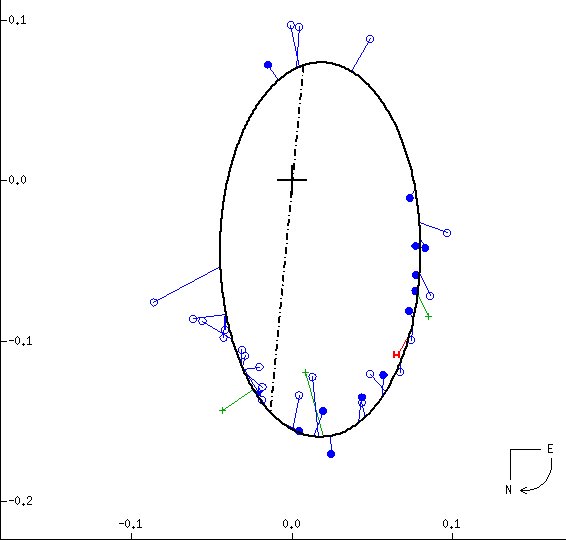
 |
The best solution to the data shows that Theta Antlia B orbits Theta A every 18.29 years at an average separation of 11.45 Astronomical Units. The closeness of the pair (note the scale), however, results in large observational uncertainty. An eccentricty of 0.40 allows the stars to be as far apart as 16.1 AU and as close as 6.8, which is still significantly farther than Jupiter is from the Sun (5.2 AU). The offsets of the semi-major axis and focus of the ellipse is the result of an orbital tilt of 53 degrees to the plane of the sky and the orbital orientation. In reality the two stars have mutual orbits about a common center of mass. From the Sixth Catalog of Orbits of Visual Binary Stars , W. I. Hartkopf and B. D. Mason, US Naval Observatory Double Star Catalog, 2006. |